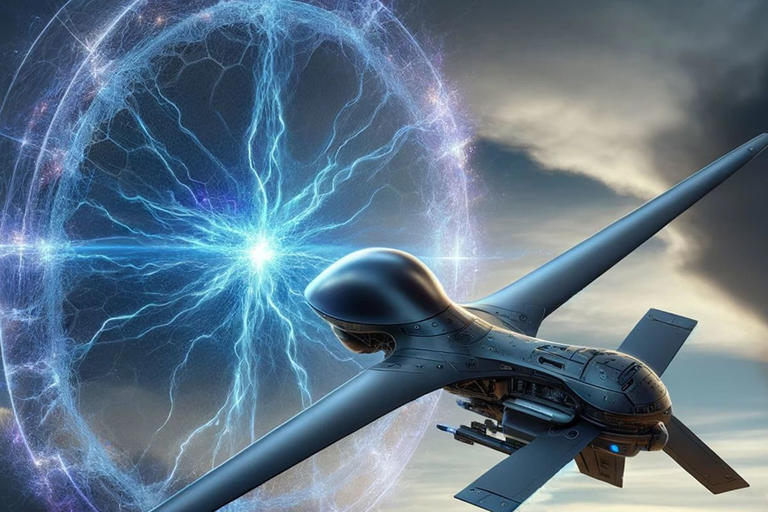It sounds good, except that i do think that tuning matters here. Is it energy dependent?
Can it be practical?
We have seen a lot of iffy concepts actually make it though. It is better to leave off judgement..
China develops ‘Star Wars’-style deflector plasma shield to defend drones© Provided by Interesting Engineering
https://www.msn.com/en-us/news/technology/china-develops-star-wars-style-deflector-plasma-shield-to-defend-drones/ar-AA1mOO3g
Chinese scientists have allegedly developed an energy shield to protect some of its military assets, the South China Morning Post (SCMP) reports. Utilizing a special kind of plasma, the energy shield is designed to resist potentially harmful microwaves from damaging delicate electronics. If the claims of its existence are true, the new shield is a significant leap in directed energy technology, especially in the ongoing aerial-to-anti-aerial arms race.
Shields up!
High-powered electromagnetic radiation (EM), like microwaves, can compromise modern technology, including military chips fortified with special circuits, even at close range. These powerful waves can cause electrical interference in the chip and significantly increase its internal temperature. For this reason, sensitive electronics must be shielded and protected as much as possible.
So, to this end, a team of researchers led by Chen Zongsheng, an associate researcher at the State Key Laboratory of Pulsed Power Laser Technology at the National University of Defence Technology, has developed what they have termed a "low-temperature plasma shield." This shield, they claim, can protect sensitive circuits from electromagnetic weapon attacks up to 170kW at a distance of only 9.8 feet (3 meters).
Chen's team demonstrated that their strategy did not violate any fundamental laws of physics before practically implementing it, consuming very little electrical energy to produce a stable layer of plasma. “We’re in the process of developing miniaturised devices to bring this technology to life,” Chen and his collaborators wrote in a peer-reviewed paper published in the Journal of the National University of Defence Technology last month. Chen's team stated that their research was motivated by pressure from the United States.
“The United States has already put into use equipment such as the Active Denial System, the Vigilant Eagle system, the AGM-86 cruise missile carrying a high-power microwave warhead and high-power microwave weapons for airspace blockade,” Chen’s team explained. The plasma-based energy shield takes a novel approach inspired by tai chi principles. Instead of directly countering electromagnetic attacks, it uses the energy to defend itself.
But how does it work? As SCMP explains, when charged particles encounter "attacking" electromagnetic waves, they immediately absorb the waves' energy and become highly active. "If the enemy persists in attacking or even intensifies their power, the density of the plasma in space will suddenly increase, causing it to reflect most of the incoming energy like a mirror. At the same time, the waves that penetrate the plasma will be overpowered by charged particles, creating an avalanche effect," the paper explains.
“The thicker the plasma, the better the protective effect,” Chen and his colleagues said after summarising the experiment data. “Once the high-power microwave subsides, the plasma promptly reverts to its original state due to the absence of external energy sustaining it,” they added.
More work needed
To prevent enemies from breaking through the plasma by altering the microwave frequency, it is important, the team explains, to have an energy shield with an effective response frequency that is as wide as possible. However, this is difficult to achieve because the energy-generating device needs to remain small, lightweight, and energy-efficient while also withstand powerful microwave attacks.
The shield's potential applications extend beyond the military. It can safeguard delicate equipment against electromagnetic interference, with broad implications for several industries.

No comments:
Post a Comment